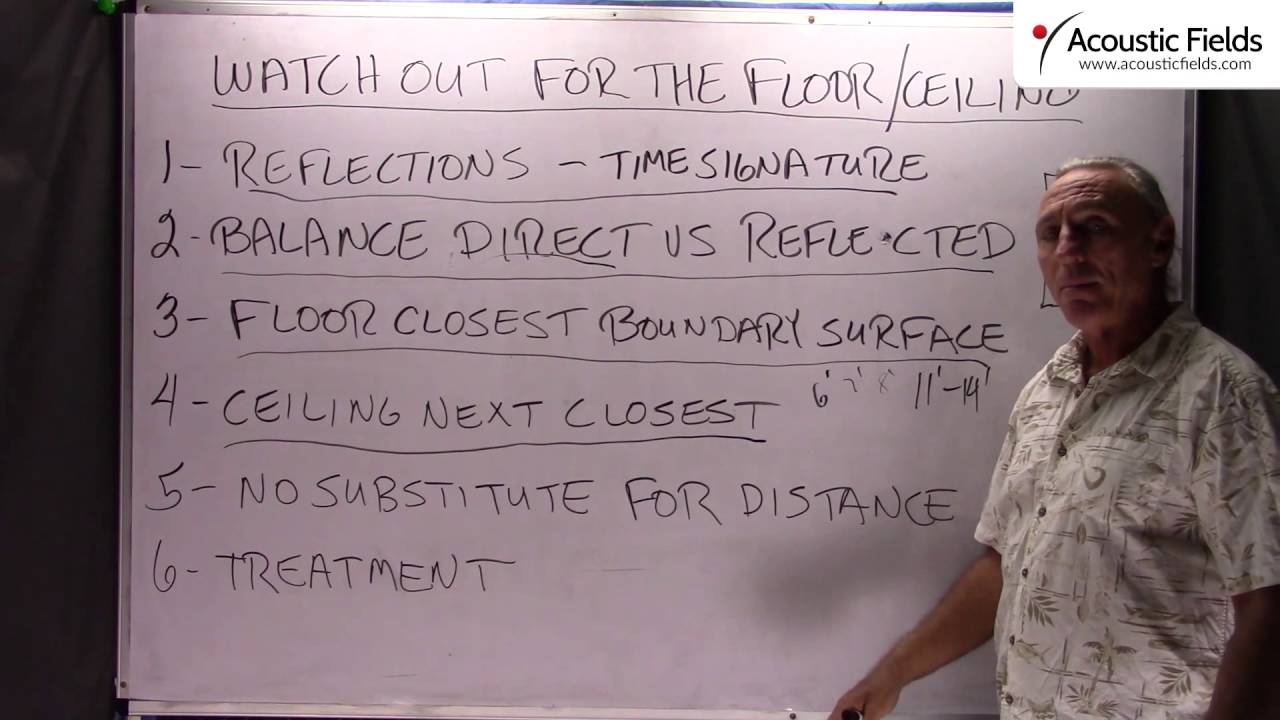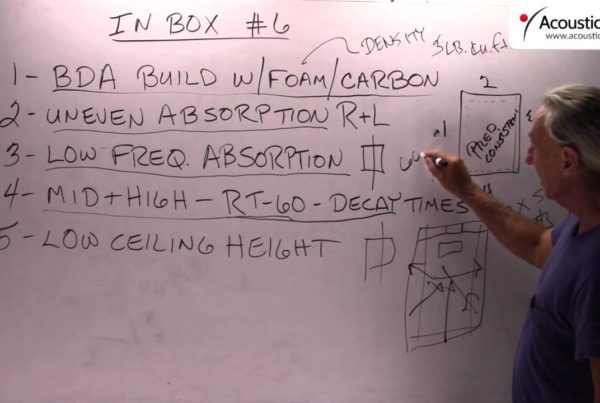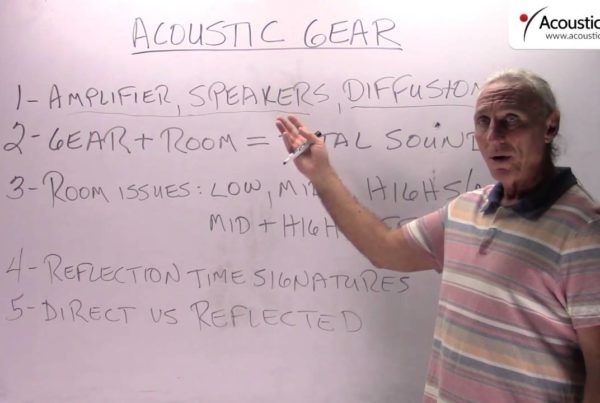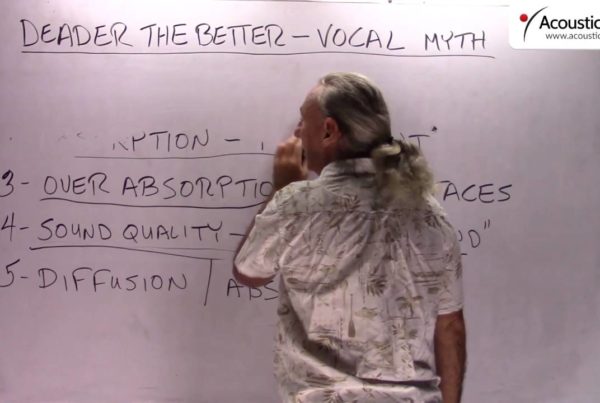Today we’re going to talk about the floor and the ceiling. Because obviously we sit on the floor and the ceiling so the floor and the ceiling are the closest boundary surface to us for reflection. So we all know that those reflections have to be managed if we’re going to generate any kind of quality audio product at all, you know, our mixes or presentations.
So the time signature of those reflections from floor and ceiling have to be managed because those are the two closest boundary surfaces. They’re even closer than the side walls which get way more attention. And I understand the reason for that because they have a direct impact on image, focus, definition, sound stage, width and things like that. But the time signature of the floor and the ceiling reflections really needs to be taken into consideration. Because we all know from past videos and the literature that it’s always a balance between the direct and the reflected energies, how much direct or source energy you get versus room sound. So you always want to try to achieve a balance between those.
So like we said the floor is the closest boundary surface. So what kind of treatment do we need on the floor? Well, the standard is wood, carpet. Those are your two opposites. You know, wood is reflective, carpet is absorptive. So the answer is there is no answer. You have to balance it out with the rest of the surfaces, the rest of the boundary surfaces in the room. You also have to balance it out with usage. I mean if it’s a high traffic studio, if it’s a high traffic usage situation you’re probably going to be better with wood floors.
Now, we can compensate for the reflections of those surfaces with [inaudible 01:53] and things like that but the answer is really there is no answer. You know, everybody’s situation is different and it really depends. If it’s a vocal room and it’s just you doing voiceovers in a vocal room, well, then probably you can choose any kind of surface material that works for you. But if it’s a high traffic area you’re moving in amplifiers and equipment and stuff like that, you know, you’re going to rethink it.
So the ceiling is obviously the next closest. So what is our treatment option? Well, first let’s talk about distances because I see this every day, it’s crazy. I see people trying to make music in rooms with 6 foot ceiling heights. So can you imagine with 6 foot the time signature at the listening position what you’re going to have or the monitoring position? I see 7 foot, I see 8 foot. All too small. All too small.
You must have much more height. Minimum 11 feet, ideal 14. Now I know that’s not realistic but I’m not about being realistic. I’m about sound quality. So you’ve got to get these surface areas far away from your head. Not the floor, because you’ve got to sit on it but the ceiling is really critical. And like we say here there is no substitute for distance.
So treatment. What are our options? Absorption – diffusion, those are the only two that we can work with. The goal with ceiling in most cases because it’s so low is to make the cycle acoustically disappear. So we treat it with diffusion so the brain doesn’t localize these reflections and go “Oh, that’s an 8 foot ceiling. Oh, that’s a 6 foot ceiling. That’s a 7 foot ceiling.” So with diffusion on the ceiling we can get a non-localization thing going when we listen.
So really diffusion and absorption on the ceiling is kind of a band aid. We’re kind of trying to minimize the psychoacoustic impact that our brain hears with all these reflections and make our brain think that the room is larger. That’s not an easy task to do. It’s complicated. You have to design the right diffusion and the right absorption blend to achieve it. But you can do it. I’ve done it in rooms as low as 8.5 feet. If you’re sitting in the chair and you’re listening and you ask people how far away is the ceiling they always guess 11, 12, 13 feet. Well, that’s because I’ve used diffusion and absorption in the right way.
So treatment is critical. There is no substitute for distance. Get that 11 to 14, distance going for the ceiling. Realize that the floor and the ceiling are your closest surfaces so those are the reflections that you have to treat the most. It’s always a balance between direct and reflected energy.








you are really of a great help for us new home studio owners. thanks a lot.
Hi Joel, Thanks for your support.
I have an 11 foot ceiling in my studio, should I treat it?
C, It depends on the usage, existing treatment on other surfaces, speaker size, etc.
Is a 12 foot ceiling too high for a 14 w 17 L room?
Rooms only see energy. What is the usage of the room.
For recording drums and electric guitar
You will need to manage both lower frequency pressure and reflections between the 3 soundfields: Floor/ceiling, sidewall/sidewall, front/rear wall.
Fill out info in this link and schedule a time slot to speak with Dennis. https://www.acousticfields.com/free-room-analysis/
Is 12 foot ceiling too high for a recording room that’s 14 ft W x 17 ft L